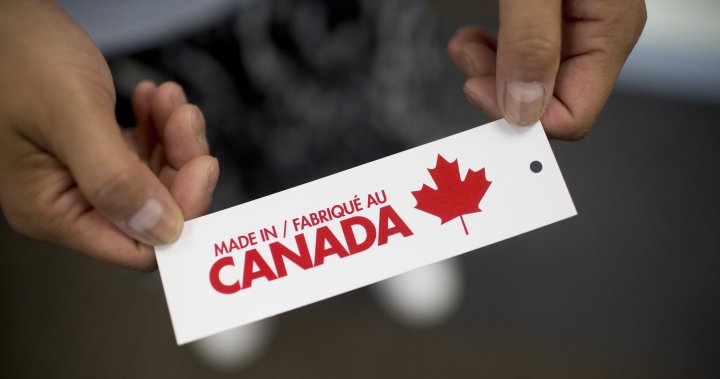The escalating trade tensions between Canada and the United States, marked by the imposition of tariffs on various goods, have sparked a renewed emphasis on supporting the Canadian economy through conscious consumer choices. Prime Minister Justin Trudeau’s call to “buy Canadian” has resonated with many, prompting a surge in online searches for locally-made products. This consumer-driven movement is seen as a crucial buttress against the potential economic fallout of the trade dispute, offering support to Canadian businesses facing increased costs and potential market disruptions.
The concept of “buying Canadian,” however, requires a nuanced understanding of product labeling. “Made in Canada” and “Product of Canada” are distinct designations, each signifying a different level of Canadian content. For non-food items, “Product of Canada” represents a higher threshold, requiring 98% Canadian content, while “Made in Canada” mandates a 51% minimum, often accompanied by a qualifier acknowledging the inclusion of imported components. Crucially, both labels stipulate that the final substantial transformation of the product must occur within Canada. Misrepresentation of product origin carries significant penalties, emphasizing the importance of accurate labeling for businesses.
Food products adhere to similar labeling principles, overseen by the Canadian Food Inspection Agency (CFIA). “Product of Canada” denotes that virtually all major ingredients, processing, and labor are Canadian, with negligible non-Canadian content. This label is interchangeable with “Canadian,” offering further clarity for consumers. “Made in Canada” for food items, accompanied by a qualifying statement, indicates that the last substantial transformation took place in Canada, even if some ingredients are sourced internationally. These guidelines strive to provide transparency and empower consumers to make informed decisions about supporting Canadian producers.
The practical application of these labeling guidelines can be complex. Businesses must diligently assess their supply chains and manufacturing processes to ensure compliance. The labeling process involves more than simply affixing a maple leaf to a product; it requires a thorough evaluation of Canadian content and adherence to specific regulations. Consumers, too, face the challenge of deciphering labels and making sense of the nuances. While the desire to support local businesses is strong, the intricacies of international trade and manufacturing can make it difficult to definitively determine a product’s true origin.
Navigating the complexities of “buying Canadian” necessitates a pragmatic approach. While striving for absolute certainty in product origin is commendable, it can become an impediment to supporting Canadian industries in a meaningful way. Focusing on the broad categories of “Made in Canada” and “Product of Canada,” rather than getting bogged down in intricate details, allows consumers to make generally informed choices that contribute to the overall goal of boosting the Canadian economy. This approach acknowledges the inherent complexities of global supply chains while still prioritizing Canadian businesses and workers.
The current trade environment underscores the importance of informed consumerism. By understanding the nuances of product labeling and adopting a practical approach to “buying Canadian,” consumers can play a significant role in supporting local economies and mitigating the potential impacts of trade disputes. While the complexities of international trade may present challenges, the collective effort to prioritize Canadian goods can make a tangible difference in sustaining businesses and protecting jobs. The ongoing conversation about trade and economic resilience highlights the crucial role of consumers in shaping the future of the Canadian economy.

